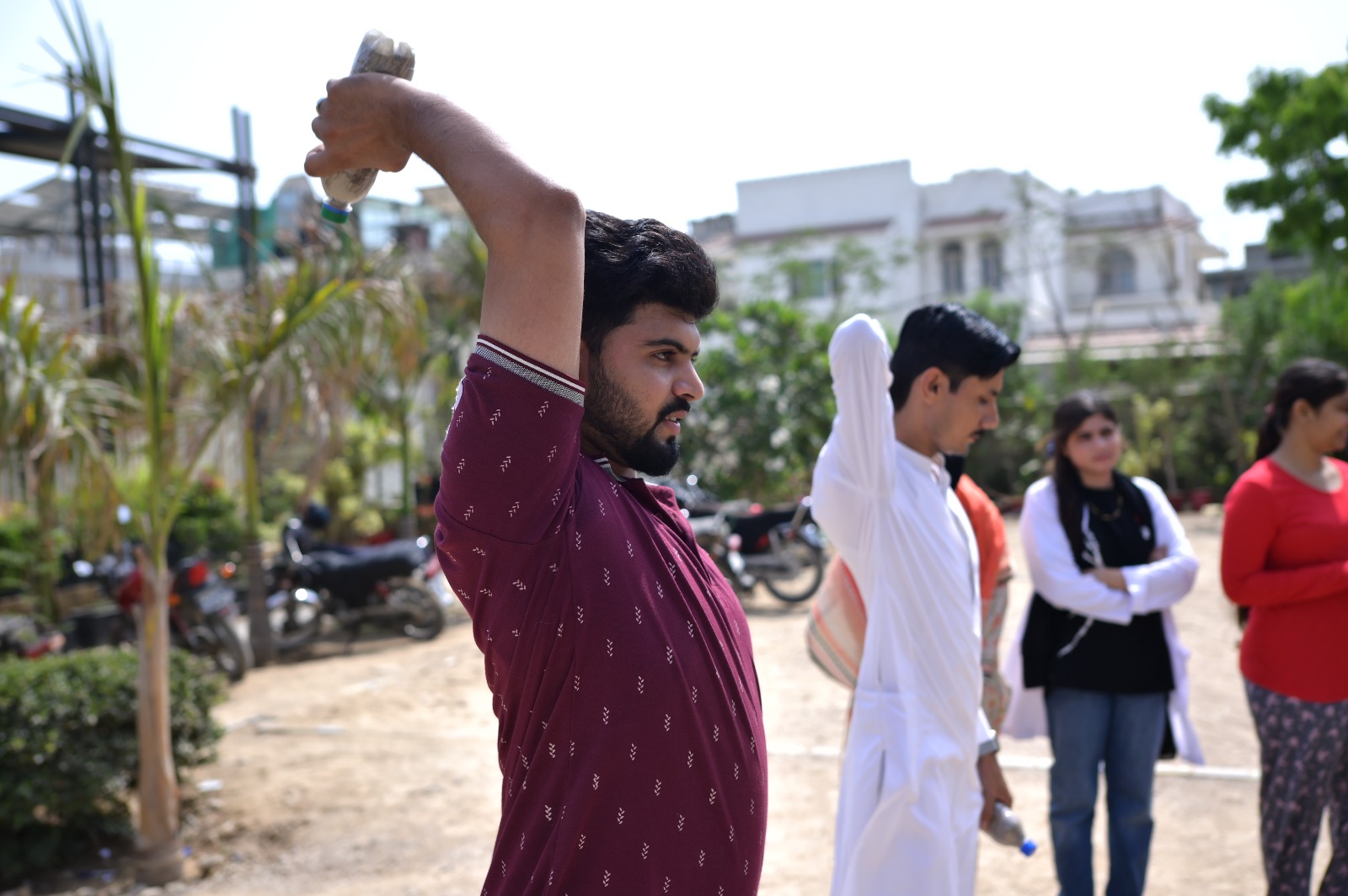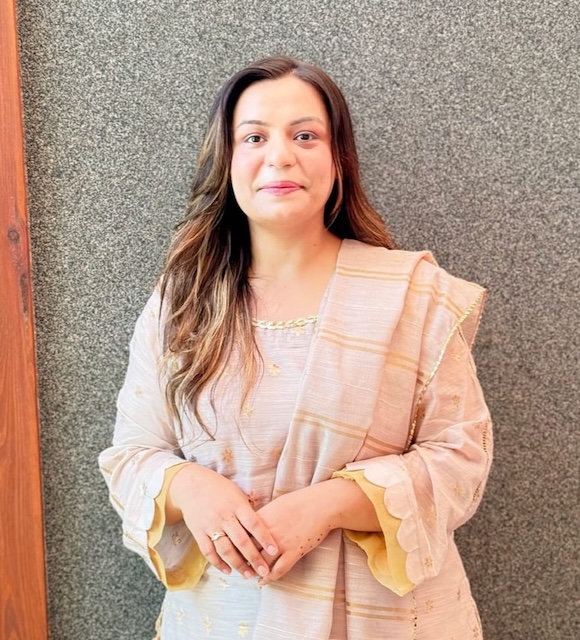
Green pathways in physiotherapy: Teaching functional capacity through nature
Introduction
As healthcare systems increasingly recognize the importance of sustainability, the need to embed ecological consciousness into the training of future health professionals has become more apparent. This report outlines a pilot initiative at Dadabhoy Institute of Higher Education (DIHE), Karachi, where elements of environmental physiotherapy were introduced into the clinical education of Doctor of Physical Therapy (DPT) students. The primary goal was to foster a mindset of ecological responsibility while enhancing adaptability in clinical practice through the use of environmentally friendly rehabilitation tools and nature-integrated settings.
Physical therapy education in Pakistan has matured significantly over the last decade, with national curricula placing greater emphasis on evidence-based interventions, interdisciplinary learning, and community-oriented service. The five-year DPT program at DIHE is structured to provide progressive clinical exposure in diverse fields such as musculoskeletal, neurological, pediatric, and geriatric rehabilitation. With climate-related health challenges becoming more pronounced, there is an increasing recognition of the physiotherapist’s role in promoting sustainable healthcare practices and environmental stewardship.
Curriculum integration
The initial integration of environmentally informed physiotherapy concepts occurred within the Rehabilitation Sciences module. This course, which traditionally emphasizes patient function in physical and social contexts, provided a fitting framework for the introduction of environmental considerations. The course content was modestly extended to include discussions on access to natural therapeutic spaces, the role of environmental factors in recovery, and the use of low-impact rehabilitation materials.
Subsequent integration was applied to third, fourth, and fifth-year DPT students enrolled in core clinical courses, including musculoskeletal, neurological, pediatric, therapeutics and geriatric physical therapy. Students were gradually exposed to sustainable alternatives to traditional physiotherapy tools. They were encouraged to reflect on environmental impacts during therapy planning and to innovate within clinical settings using available natural resources.
Implemented Tools and Methods
Outdoor Gait Training Tracks
Surfaces such as grass, sand, and gravel were used to simulate real-world mobility scenarios, enhancing balance and gait adaptability in a more ecological setting.
Eco-Friendly Exercise Equipment
Recycled resistance bands, bamboo poles, cork yoga blocks, and other biodegradable items were introduced in routine strengthening and flexibility exercises.
Open-Air Treatment Pods
Students conducted supervised sessions in ventilated, sunlit spaces, gaining practical experience in alternative clinical setups that reduce energy consumption.
Gardening-Based Rehabilitation Tasks
Simulated functional training with planters and ergonomic gardening tools was included in lab sessions, particularly in pediatric and geriatric modules.
Environmentally Challenged Case Scenarios
Students were given patient cases involving climate-affected or under-resourced communities. They were tasked with creating context-sensitive, sustainable rehabilitation plans.

Anum Irshad (PT, DPT)
Lecturer, Rehabilitation Sciences
Dr. Anum, PT is a lecturer at the Faculty of Science, Dadabhoy Institute of Higher Education. Her research interests include pediatric rehabilitation & neurology. She has clinical experience from renowned institutions such as PNS Shifa Hospital, Brain & Mind Diagnostic and Rehabilitation Center, and Rabia Moon Memorial Institute of Neuroscience.
Learning objectives
Equip students with skills to integrate sustainable tools into clinical decision-making
Develop adaptability in varied environmental contexts
Enhance understanding of how ecological settings influence rehabilitation outcomes
Foster ethical thinking in relation to environmental and patient health
Assessment methods
Clinical Checklists evaluated students’ practical use of eco-friendly equipment and adaptability in different environments.
Reflective Logs documented students’ evolving perspectives on sustainability and professional responsibility.
Mini-OSCEs featured scenarios requiring the application of non-traditional, sustainable rehabilitation methods.
Key outcomes
Clinical Adaptability: A majority successfully incorporated sustainable tools into therapy without compromising treatment efficacy.
Enhanced Critical Thinking: Reflective assignments demonstrated deeper insight into environmental determinants of health.
Professional Development: Several students expressed a new interest in incorporating sustainability into future clinical practice or research.
Reflections
Student feedback was notably positive. Outdoor sessions were described as “engaging” and “stimulating,” while the use of unconventional tools was seen as a welcome challenge that encouraged flexibility and problem-solving. Reflective pieces revealed growing awareness of the therapist’s role in environmental sustainability.
Faculty initially expressed concern about operational logistics, such as weather conditions and space constraints. However, these challenges were outweighed by increased student enthusiasm and deeper engagement in clinical reasoning. The integration, while small in scale, clearly enhanced both cognitive and practical learning outcomes.
Future plans and recommendations
To build on these promising outcomes, the department aims to:
- Develop a formal elective course on Environmental and Sustainable Physiotherapy
- Partner with local parks and community rehabilitation sites for outdoor clinical practicums
- Collaborate with the public health and environmental sciences departments for interdisciplinary projects
- Encourage student-led research on sustainable practice models, eco-design in clinics, or environmental barriers in rehabilitation
- Host faculty development workshops on integrating ecological themes into health education
Formal evaluation tools, including pre- and post-course assessments are planned to systematically track student learning and program impact in future iterations.
Conclusion
The early integration of environmentally informed practices into physical therapy education at DIHE demonstrates that even modest curricular changes can yield meaningful educational benefits. These efforts not only enhance students’ clinical competencies but also prepare them to become environmentally responsible practitioners in an era where health and sustainability are increasingly interconnected.
AI Statement: ChatGPT was used to support drafting and organising, clarity and coherence, as well as language proofing and refinement.

0 Comments